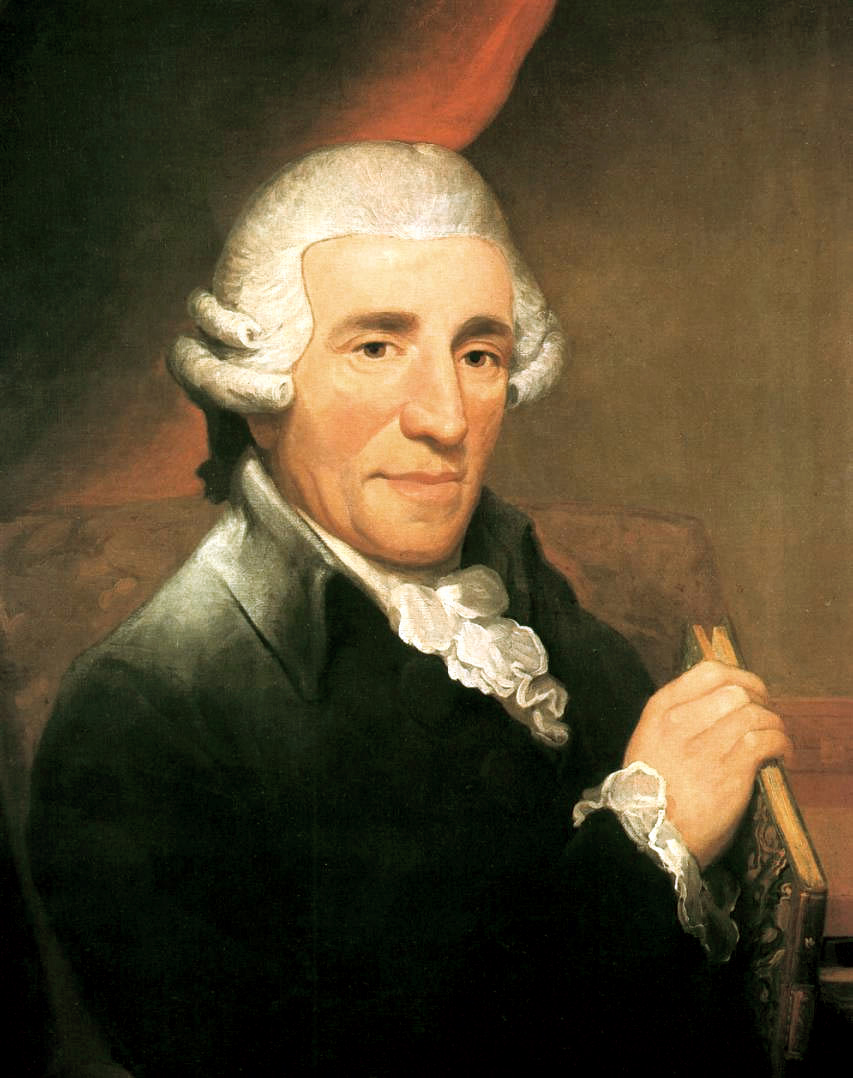Franz Joseph Haydn
The Classical PeriodI was cut off from the world. There was no one near to confuse me, so I was forced to become original."

Thomas Hardy, Public domain, via Wikimedia Commons
Franz Joseph Haydn came from a poor family in a small Austrian town called Rohrau. His parents took note of his natural musical talent and sent him to Vienna at the age of 8 to join the choir at St. Steven's Cathedral. He gained a reputation for having such a beautiful voice that when it broke at the age of 16, the choirmaster suggested he become a castrato until Haydn's father intervened. He also gained a reputation as a prankster and was at one point publicly caned after cutting the pigtail off another chorister.
After completing his musical training, he began working for the wealthy and influential Esterházy family in Hungary, which was part of the Austrian Empire. In their employ, Haydn was responsible for composing music for concerts which were held twice a week, as well as liturgical music and pieces for various festivals. Haydn believed that his isolation from the mainstream European music of the time forced him to develop a unique and original style.
His music was published across Europe, and became the standard for the time. He is mainly known for his symphonies, of which he wrote over a hundred. His early works followed the standard three-movement "fast-slow-fast" scheme found in concerti and sonatas, but Haydn eventually pioneered the four-movement form by adding a dance suite movement after the slow movement. Haydn counted Ludwig van Beethoven among his students, and was a friend and mentor to Wolgang Mozart, who called him "Papa Haydn." Haydn married in 1760 but had no children and his marriage was not a happy one; it is reported both he and his wife engaged in extramarital affairs.
Haydn's most recognizable tune, and that of which he was most proud, was the Kaiserhymne, an anthem written for Emperor Francis II.
When Prince Nicolaus Esterházy died in 1790, Haydn took two concert tours in England, which earned him a great deal of fame and income. He returned to Vienna in 1795, living the life of a rich and famous composer until retiring in 1803. In the summers, Haydn lived in Eisenstadt with the Esterházys, who formally retained him (and continued paying him) on as kappelmeister until the very end of his life. He died a very wealthy man in 1809.
Haydn was buried in a small town called Grumpendorf, since Vienna was under occupation by Napoléon at the time. A week after the burial, one of the Esterházy family secretaries conspired with the gravedigger and a phrenologist to dig up Haydn's remains and steal his skull, hoping to examine it to determine the source of his musical talent. They remained in possession of the skull for over a decade, until Prince Nikolaus Esterházy II attempted to relocate Haydn's body to a more fitting grave, but found it decapitated. The prince identified those responsible and demanded the skull back; they gave him a fake one instead. The real skull passed from hand to hand until it was finally reunited with the rest of Haydn's skeleton in 1954.
